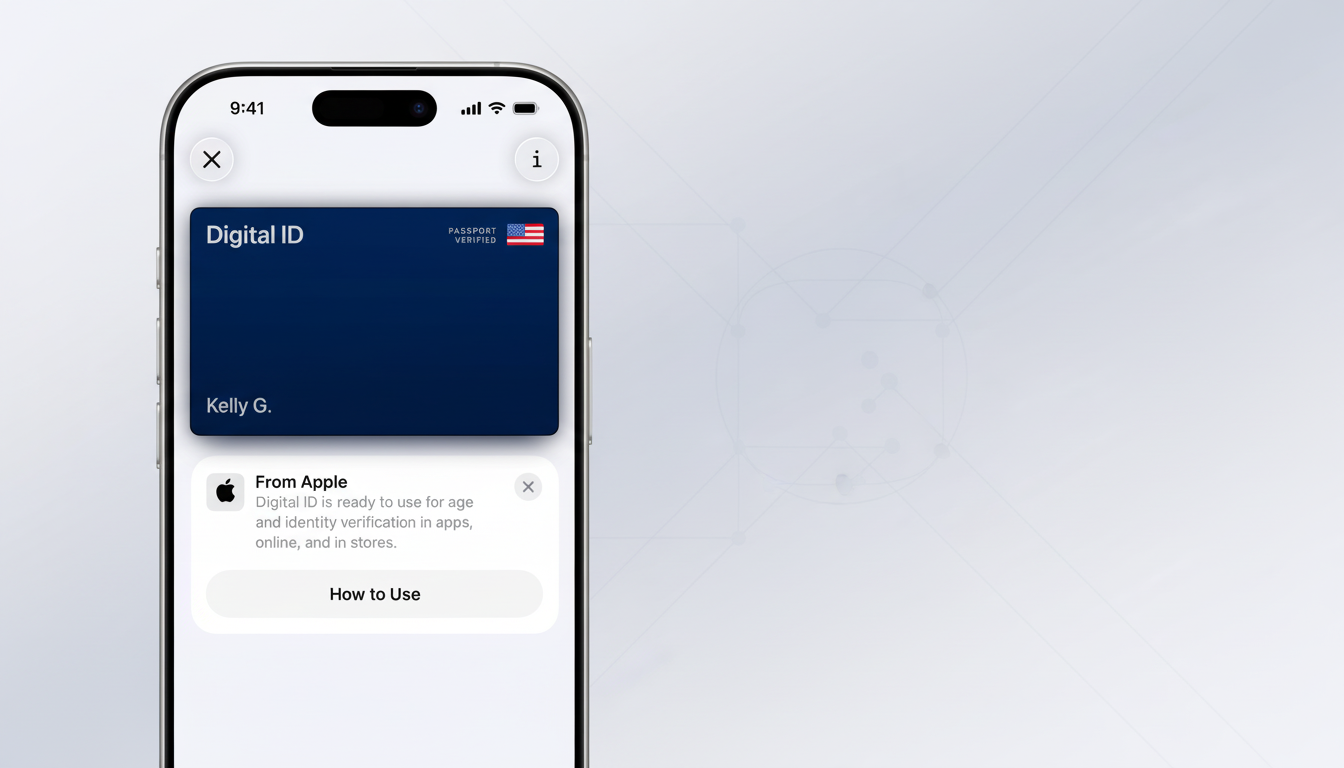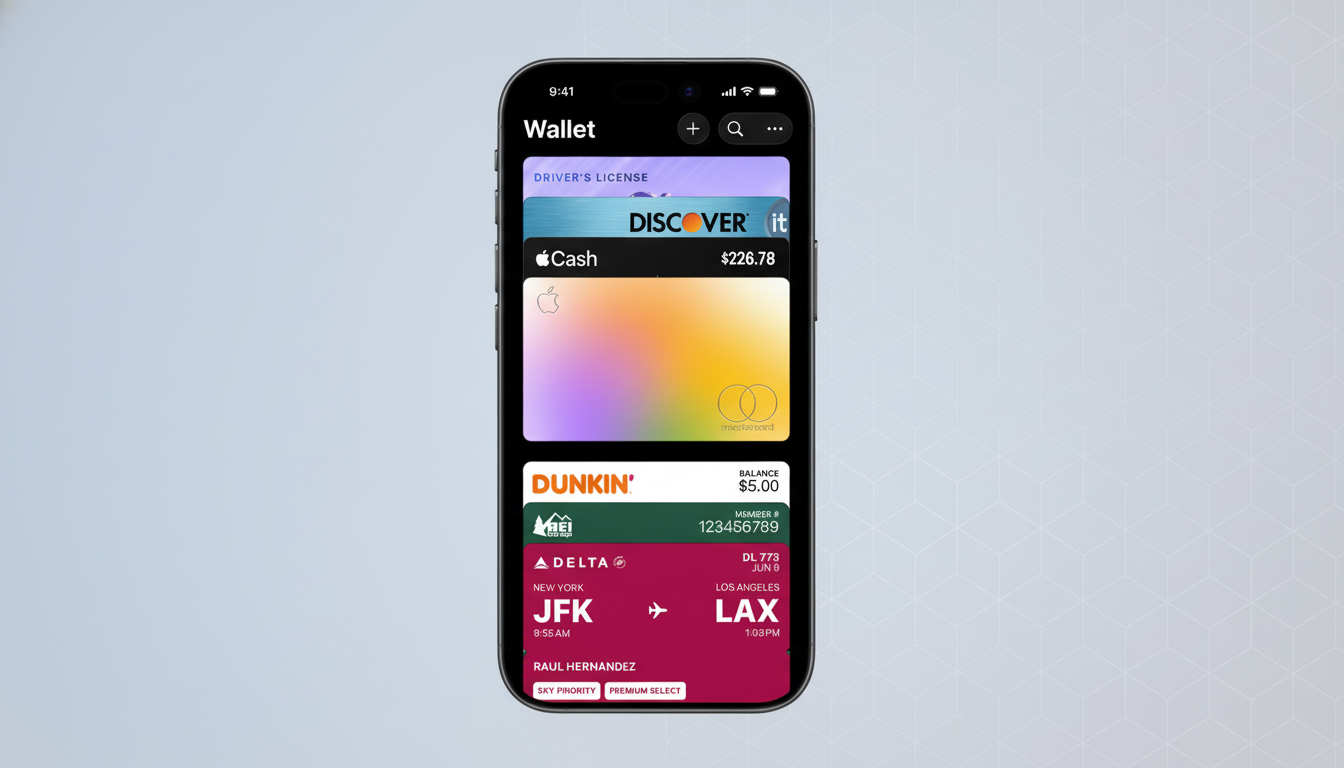Apple says it will soon introduce an option for U.S. travelers to add a digital ID that comes from their passport to their Apple Wallet, meaning they can show proof of identity at certain TSA checkpoints without exchanging a plastic card or piece of paper. The company pitched the addition as an evolution of Wallet from a place to store payments and tickets to an avenue for secure, privacy-preserving identity — albeit one that is tied at launch to a future iOS update.
What Apple Is Adding to Wallet for Digital ID Use
The feature will enable users to prove who they are, after creating a digital ID that can be verified by cross-referencing with their U.S. passport. In practical terms, this involves scanning the data page and e-chip of a passport using an iPhone, performing liveness checks and Face ID verification, and then saving a cryptographically signed credential in the Secure Enclave. Apple says the credential is device-based, minimized to just the attributes a checkpoint requires, and shareable only with user permission.

This is not a digital copy of a passport, and it will not replace the book for international travel. Instead, it’s a TSA-accepted identity credential for domestic screening — and one not so dissimilar from the mobile driver’s licenses that Apple Wallet already supports in participating states.
How It Will Work at TSA Checkpoints with Wallet IDs
As of now, TSA has been piloting mobile identity at security lanes enabled with updated Credential Authentication Technology (referred to more commonly as CAT-2), which validates a digital credential by way of a live facial match and confirms flight status with the airline. And for passport-linked digital IDs, travelers will “tap” their iPhone or Apple Watch near a reader, verify the information, and use Face ID or Touch ID to authenticate before sharing the approved token with the reader. No device unlocking and no handing over.
TSA has indicated its mDL and digital ID program is growing to more airports; however, acceptance is confined to specific lanes. During a transition period, travelers would still need to have a physical ID as backup.
Why This Matters Now for Travelers and TSA Lines
The timing coincides with federal REAL ID enforcement, which increased the stringency of identity document requirements at checkpoints and caused many travelers to wonder whether their state IDs were up to snuff. A passport-based digital ID provides a route for those who may not have an officially REAL ID–compliant state credential, while also using one that the overwhelming majority of frequent flyers already own.
It also plays into the larger trend of momentum for digital credentials. ISO/IEC 18013-5 specifies how mobile driver’s licenses are shared securely, and aviation bodies and border agencies are testing ICAO Digital Travel Credentials for potential use. Apple’s strategy relies on selective disclosure, device attestation, and ephemeral tokens — decisions that conform with advice in NIST’s digital identity framework.
Adoption and Early Scale for Passport-Based IDs
Apple’s government ID effort inside Wallet already reaches 12 states and Puerto Rico and about a third of U.S. licenses, with TSA acceptance at participating airports. Creating a passport-based flow might be able to speed nationwide usability, as it wouldn’t rely on each state motor vehicle agency coming aboard one at a time.
At the Money 20/20 USA conference, Apple said that more than a billion transactions are made on Apple Pay each month in over 89 markets and from over 11,000 banks and card network operators, including 15 domestic networks, and that 90% of U.S. retailers accept Apple Pay.

While those numbers are telling in terms of payments, they demonstrate the infrastructure and the patterns of behavior that Wallet can mine for its identity offerings. Apple also mentioned use-case growth in non-payment Wallet items: digital car keys for 29 automakers and over 300 models, transit support available across more than 250 regions and over 800 cities, and hotel room keys that had been provisioned on over 2 million devices.
Privacy and Security Design Behind Passport IDs
Identity is a delicate thing, and Apple’s model ensures that most of the work is done on-device, processes only as much information as needed, and needs biometric okay for each transaction. Verifiers are handed a signed credential and evidence that it originated from an authentic device; as a result, they do not receive the raw passport scan or access to the device. If a phone is lost, the credential can be revoked with Apple ID controls and enabled again only after re-provisioning.
Experts cite advantages over plastic: Dynamic credentials lower the risk of counterfeiting, and selective disclosure means you don’t have to overshare. Still, consistent governance matters. For these and many other sensitive activities, clear and aligned policies on data retention, auditability of actions taken with stored data, and sharing the results of such analyses (if any) in a judicial setting will be needed across DHS, TSA, and State Department personnel to establish public trust.
Limitations and Next Steps for TSA Digital ID Use
For the time being, think of the feature as coming in handy mainly at TSA domestic checkpoints and in lanes with digital ID capability. It will not stand in for a passport book when traveling internationally; CBP and foreign authorities still require ICAO-compliant documents. In parallel, travel and aviation stakeholders are evaluating digital travel credentials for eventual e-gate and bag-drop uses in the future, but at a distance.
The potential audience is massive: Pew Research says about 85% of U.S. adults own a smartphone, and Wallet would ride the rising wave of contactless payments and mobile boarding passes.
With broader acceptance by TSA and airlines to regularize pre-screening already in place, a passport-based digital ID could make queues and document handling at security shorter and less stressful.
Apple, for its part, says the feature is coming “soon,” attached to an upcoming software update. Look for a gradual airport rollout, clear signage at the participating lanes, and new guidance from the TSA on which digital IDs are accepted. While the program scales, we recommend travelers update their devices, have a passport that is valid and readable for NFC, and an appropriate physical ID with them.

